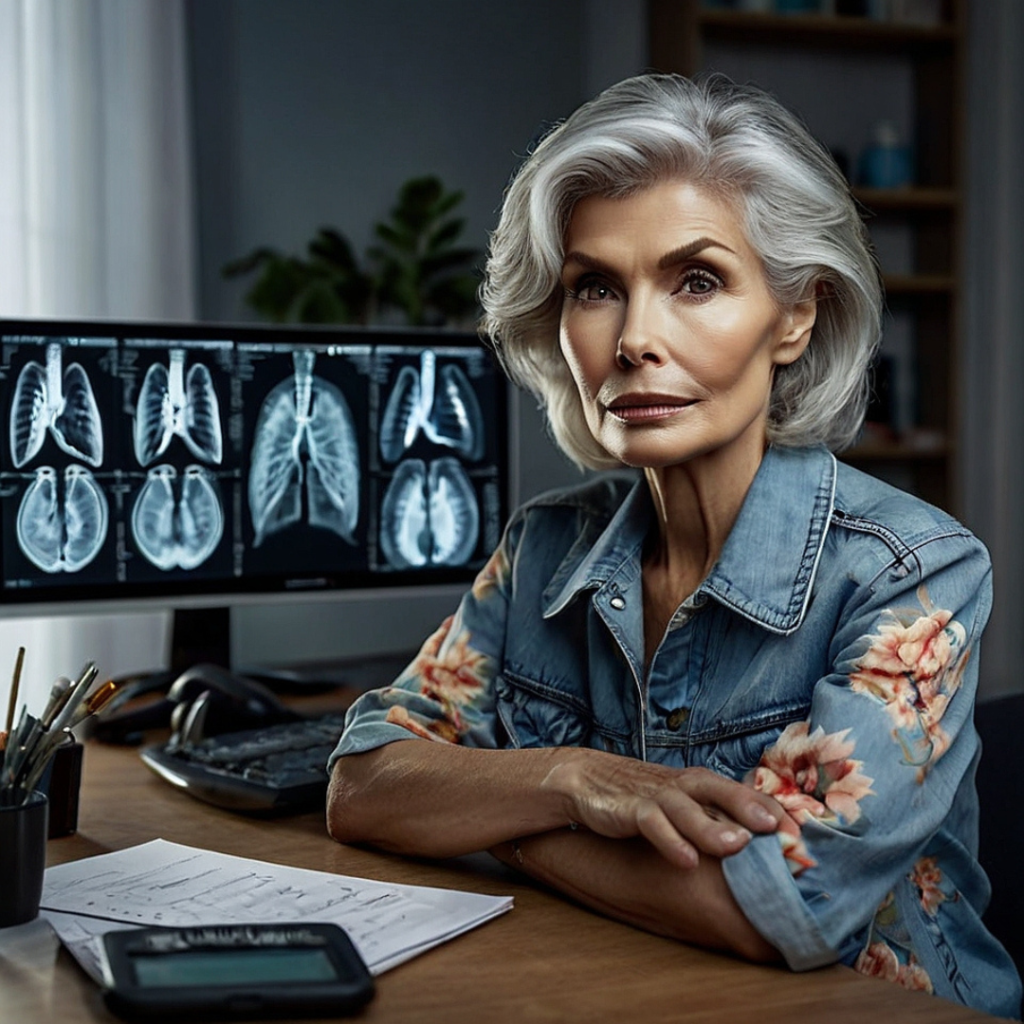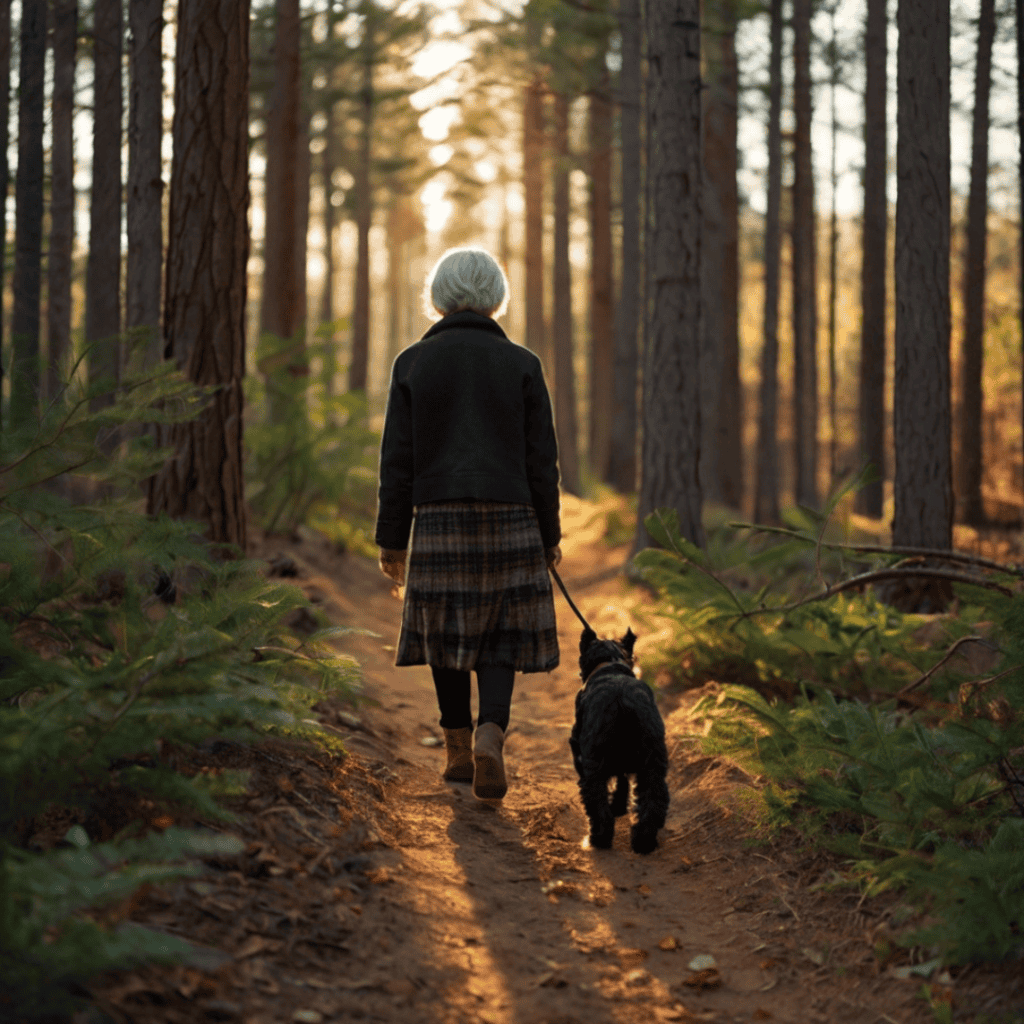
What is Lung Cancer? Understanding Risks, Symptoms, and Treatments
Lung cancer—it’s the two words no one wants to hear from their doctor. But before you start spiraling, let’s take a deep breath (pun intended) and break it down.
Lung cancer is one of the most common types of cancer worldwide, but it’s also one of the most misunderstood. The American Lung Association offers additional resources to better understand your diagnosis. Whether you’re here because of a recent diagnosis, supporting a loved one, or just brushing up on your health knowledge, this guide will walk you through the ins and outs of lung cancer—without the medical mumbo jumbo.
Understanding Lung Cancer: What It Is and Why It Happens
Imagine your lungs as a beautifully orchestrated symphony of tiny air sacs, all working together to help you breathe. Now, picture one rogue musician deciding to play their own tune—on a broken trumpet. That’s lung cancer.
Lung cancer happens when abnormal cells start multiplying uncontrollably in the lungs. Instead of dying off like normal cells, they keep growing, forming tumors that interfere with breathing and oxygen flow. These troublemakers can spread (metastasize) to other parts of the body, making treatment trickier.
Types of Lung Cancer
1. Non-Small Cell Lung Cancer (NSCLC)
- The heavyweight champion, making up about 85% of all lung cancer cases.

- Grows more slowly and is often treatable if caught early.
- Subtypes include adenocarcinoma (most common), squamous cell carcinoma, and large cell carcinoma.
2. Small Cell Lung Cancer (SCLC)
- The underdog, but not in a good way—only 15% of lung cancers, but spreads rapidly.
- More common in heavy smokers.
- Tends to be aggressive and often diagnosed at a later stage.
So, what makes lung cancer pick a fight with your body? Let’s dive into the root causes.
Lung Cancer Causes and Risk Factors
So, what exactly makes lung cancer rear its ugly head? Contrary to popular belief, it’s not just about smoking (though, spoiler alert, that’s a big one). There are many hidden triggers. Understand lung cancer causes beyond smoking to better protect yourself. Lung cancer can be sneaky, developing due to a mix of environmental, genetic, and lifestyle factors.
The Usual Suspects: What Causes Lung Cancer?
1. Smoking: The #1 Culprit
- About 80%–90% of lung cancer deaths are linked to smoking.
- Cigarettes are packed with 7,000+ chemicals, many of which are known carcinogens.
- The longer you smoke, the higher your risk—though quitting at any stage dramatically lowers it.
2. Secondhand Smoke: The Uninvited Guest
- Even if you’ve never lit a cigarette, exposure to secondhand smoke increases your risk by 20%–30%.
- Living with a smoker or frequenting smoky environments can have long-term effects.
3. Radon: The Silent Killer
- This odorless, colorless gas seeps up from the ground and can accumulate in homes.
- It’s the #2 leading cause of lung cancer and is responsible for an estimated 21,000 deaths per year in the U.S.
- The only way to detect it? A radon test (which, fun fact, is cheaper than a night out at a restaurant).

4. Air Pollution and Occupational Hazards
- Diesel fumes, asbestos, arsenic, and industrial chemicals can damage lung tissue over time.
- People working in construction, mining, or heavy industry face higher risks.
5. Genetics: The Wild Card
- Some people inherit gene mutations that make them more prone to lung cancer.
- Even without exposure to smoking or environmental toxins, genetics can play a role in 10%–15% of lung cancers. Gene mutations also increase risk for blood conditions like MGUS and multiple myeloma, which share similar diagnostic challenges and treatment questions.
6. Lung Disease and Chronic Inflammation
- COPD (Chronic Obstructive Pulmonary Disease) increases lung cancer risk 4–6 times compared to those without it.
- Long-term lung infections and scarring can create a breeding ground for cancerous growths.
Here’s the kicker—while some risk factors (like genetics) are out of our hands, many are preventable. Next, let’s talk about how to spot lung cancer before it takes the driver’s seat.
Recognizing Lung Cancer Symptoms
Lung cancer is a bit of a trickster—it doesn’t always show obvious signs until it’s in a later stage. Learn more about the early warning signs of cancer across different types to better protect yourself and loved ones. That’s why it’s often called a “silent killer.” But that doesn’t mean it’s completely undetectable. The key is knowing what early lung cancer symptoms to watch for before it gets a head start.
Early vs. Late-Stage Symptoms
Early Symptoms (Easily Overlooked but Important!)
1. A persistent cough that won’t quit (lasting more than 8 weeks).
2. Shortness of breath after climbing stairs or doing routine activities.
3. Chest pain that worsens when you laugh, breathe deeply, or cough.
4. Unexplained fatigue that makes even small tasks feel like a marathon.
5. Mild wheezing or hoarseness (even if you don’t have a cold).
Advanced Symptoms (Red Flags That Need Immediate Attention!)
6. Coughing up blood (hemoptysis) – Even a small amount is cause for concern.
7. Sudden weight loss without trying (losing 10+ pounds for no reason).
8. Severe shortness of breath that feels like you can’t get enough air.
9. Bone pain (especially in the back, ribs, or hips) – A sign that cancer may have spread.
10. Swelling in the face or neck due to pressure on blood vessels.
When to See a Doctor
If you have any of the early symptoms lasting more than a few weeks, it’s time to check in with your doctor. If you experience advanced symptoms like coughing up blood or severe breathlessness, don’t wait—seek medical attention immediately.
Since lung cancer survival rates depend heavily on early detection, recognizing these symptoms sooner rather than later could be life-changing. Up next—how doctors actually diagnose lung cancer and confirm what’s going on under the hood.

How Lung Cancer is Diagnosed
So, you’ve got a nagging cough, or maybe your doctor suspects something’s up. What happens next? Diagnosing lung cancer isn’t as simple as a quick blood test—it’s more like detective work, where doctors gather clues through a series of tests. The earlier they catch it, the better your chances of tackling it head-on.
Screening for Lung Cancer: Catching It Before It Spreads
For high-risk individuals (like smokers or those with a family history), low-dose computed tomography (LDCT) is the go-to screening tool. The CDC recommends annual screening for high-risk adults. It’s basically a supercharged X-ray that can spot tumors early—before symptoms even show up. Research shows LDCT screenings can reduce lung cancer deaths by 20% among high-risk individuals. Here’s how lung cancer screening works and who should get tested.
Diagnostic Tests: Getting the Full Picture
1. Imaging Tests
- Chest X-rays – The first step, but not always detailed enough.
- CT Scans & PET Scans – These create detailed images to detect suspicious growths and whether cancer has spread.
2. Biopsies (The Only Way to Confirm Cancer)
- Needle Biopsy: A thin needle extracts a sample from the lung.
- Bronchoscopy: A tiny camera goes down the throat to get a closer look inside the lungs.
- Sputum Cytology: If you’re coughing up mucus, it’s analyzed for cancer cells.
3. Lung Cancer Staging: How Far Has It Spread?
Want a full breakdown? Explore lung cancer stages and what each one means.
- Stage 1: Cancer is small and localized—easiest to treat.
- Stage 2-3: Cancer has spread to nearby lymph nodes.
- Stage 4: Cancer has metastasized to distant organs (most challenging to treat).
Why Early Diagnosis is a Game-Changer
Here’s the deal—lung cancer survival rates skyrocket when caught early. The five-year survival rate for Stage 1 lung cancer is around 60%-80%, but for Stage 4, it drops to about 5%. That’s why getting screened and acting on early symptoms is crucial.
Next, let’s talk survival rates—what they mean, what affects them, and why hope is still very much on the table.

Lung Cancer Survival Rate: What the Numbers Say
Let’s be real—googling survival rates can feel like staring down a scary statistic. But before you let panic set in, let’s break it down: survival rates are just numbers, not fate. They don’t predict individual outcomes but rather give an overview of trends based on thousands of cases.
Breaking Down the Lung Cancer Survival Rate
Survival rates depend on two big factors: the type of lung cancer and how early it’s caught. To dive deeper, check out how survival rates change by stage and treatment.
Non-Small Cell Lung Cancer (NSCLC) Survival Rates
1. Stage 1: 60%–80% survive beyond five years.
2. Stage 2: 30%–50% survive five years or more.
3. Stage 3: Drops to around 10%–25%, depending on the extent of spread.
4. Stage 4: Around 5% survive past five years—but new treatments are improving these odds.
Small Cell Lung Cancer (SCLC) Survival Rates
5. Limited-stage SCLC: About 30% survive past five years.
6. Extensive-stage SCLC: Drops to around 3% due to rapid spread.
Factors That Can Improve Survival
7. Early Detection: The sooner it’s caught, the better the outlook.
8. Treatment Advances: Immunotherapy and targeted therapy are revolutionizing survival rates.
9. Lifestyle Choices: Quitting smoking (even after diagnosis) can improve outcomes.
10. Overall Health: A strong immune system and good nutrition help in fighting the disease.
Hope is on the Horizon
Here’s the silver lining—lung cancer survival rates are improving. With earlier screenings, better treatments, and lifestyle changes, more people are living longer and healthier lives post-diagnosis.
Next up, let’s break down those treatment options and what they mean for patients.
Treatment Options for Lung Cancer
Hearing “You have lung cancer” might feel like stepping into a battlefield unarmed. But the good news is that new lung cancer treatment options are offering more hope than ever.. Treatment isn’t one-size-fits-all; it depends on the cancer type, stage, and overall health of the patient. Let’s break down the arsenal of treatment options available.
1. Surgery: The Cut-and-Remove Approach
Best for: Early-stage (Stage 1 or 2) Non-Small Cell Lung Cancer (NSCLC)
- Lobectomy: Removes an entire lobe of the lung (most common).
- Pneumonectomy: Takes out one whole lung if cancer is widespread on one side.
- Segmentectomy/Wedge Resection: Removes only the affected part if full lobe removal isn’t possible.
- Surgery offers the best chance of cure if the cancer hasn’t spread beyond the lung.

2. Radiation Therapy: The Cancer Zapper
Best for: People who aren’t surgery candidates or have advanced cancer
- Uses high-energy beams to target and destroy cancer cells.
- Can shrink tumors before surgery or relieve symptoms in late-stage cancer.
- Side effects: Fatigue, skin irritation, and difficulty swallowing.
3. Chemotherapy: The Cancer Cell Assassin
Best for: Both NSCLC and Small Cell Lung Cancer (SCLC), especially in later stages
- Uses powerful drugs to kill cancer cells or stop them from growing.
- Usually given in cycles to allow the body to recover between treatments.
- Side effects: Hair loss, nausea, and weakened immunity—but newer drugs help manage these effects.
4. Immunotherapy: Supercharging the Body’s Defense
Best for: Advanced lung cancer that doesn’t respond to chemo alone
- Helps the immune system recognize and attack cancer cells.
- Key drugs: Pembrolizumab (Keytruda), Nivolumab (Opdivo).
- Some patients with Stage 4 lung cancer have seen dramatic improvements with immunotherapy.
5. Targeted Therapy: The Sniper Attack
Best for: Patients with specific gene mutations (like EGFR, ALK, or ROS1-positive lung cancer)
- Unlike chemo (which attacks all fast-growing cells), targeted therapy blocks specific cancer-driving proteins.
- Fewer side effects compared to chemo.
6. Complementary & Lifestyle Therapies
Best for: Everyone (alongside medical treatment, not as a replacement!)
- Nutrition: A well-balanced diet boosts energy and supports treatment recovery.
- Exercise: Even light activity can help reduce fatigue and improve lung function.
- Mind-body techniques: Meditation, yoga, and breathing exercises help with stress.
Which Treatment is Best?
It depends on the cancer stage, overall health, and what works best for the patient’s body. A combination approach—like surgery + chemo or radiation + immunotherapy—often offers the best results.
With so many advancements in treatment, lung cancer is no longer the automatic death sentence it once was. Next, let’s explore how to live well with lung cancer and manage life after diagnosis.

Living with Lung Cancer: Managing Life After Diagnosis
A lung cancer diagnosis can feel like a plot twist no one saw coming. But here’s the thing—a diagnosis isn’t a full stop; it’s a comma. Many people live fulfilling lives while managing lung cancer, and with the right approach, you can, too.
1. Coping with the Emotional and Mental Toll
Cancer isn’t just a physical battle—it’s a mental and emotional rollercoaster. Here’s how to ride the waves:
- Talk About It: Whether it’s with a therapist, support group, or a trusted friend, don’t bottle up emotions.
- Stay Informed (But Not Overwhelmed): Stick to credible sources—Dr. Google can be a scary place.
- Practice Mindfulness: Techniques like meditation, deep breathing, and journaling help ease anxiety.
2. Building a Strong Support System
No one should face lung cancer alone. Build a “cancer squad” that includes:
- Family & Friends: Let them know what kind of support you need—whether it’s company at doctor visits or just a movie night.
- Support Groups: Online or in-person groups offer encouragement from people who “get it.”
- Care Teams: Doctors, nurses, nutritionists, and social workers are all part of your fight squad.
3. Diet & Lifestyle for Lung Health
Think of food as fuel for healing.
- Eat Nutrient-Rich Foods: Focus on lean proteins, whole grains, and antioxidant-rich fruits and veggies.
- Hydrate Like a Pro: Aim for 8+ glasses of water a day to keep your body running smoothly.
- Move Your Body: Even gentle stretching or short walks can improve lung capacity and fight fatigue.
4. Managing Treatment Side Effects
- Fatigue? Listen to your body—rest when you need to, but stay active when possible.
- Shortness of Breath? Breathing exercises and pulmonary rehab can help.
- Chemo Brain? (Yes, it’s a thing!) Stay mentally active with puzzles, reading, or even a podcast binge.
5. Advocating for Yourself in Healthcare
- Ask Questions: No question is too small when it comes to your health.
- Stay Organized: Keep a symptom journal, track meds, and note questions before appointments.
- Know Your Options: New treatments are emerging all the time—don’t be afraid to ask about clinical trials.
6. Long-Term Survivorship: Adjusting to a New Normal
Many people diagnosed with lung cancer go on to live years—even decades—after treatment. But even in remission, some side effects linger. Here’s how to manage them:
- Shortness of breath? Pulmonary rehabilitation and breathing exercises can help rebuild lung strength.
- Fatigue? Energy levels might take months to return. Listen to your body, rest when needed, and maintain light activity.
- Cognitive fog (“chemo brain”)? Some patients report memory issues after treatment—try brain-boosting activities like puzzles, reading, or even learning a new hobby.
- Emotional health matters: Depression and anxiety are common post-cancer. Therapy, support groups, and even simple mindfulness exercises can help.
7. Staying Proactive with Follow-Ups
Even if your cancer is in remission, regular check-ups are non-negotiable. Your doctor will likely schedule imaging tests every 3 to 6 months for the first couple of years, then annually. Keeping up with these visits ensures that if cancer does return, it’s caught early.
Living with lung cancer is challenging, but it’s also an opportunity to take charge of your health and focus on what truly matters. Next up—how to reduce your risk and take proactive steps for lung health.
Prevention and Reducing Your Risk
We’ve covered the basics of lung cancer prevention—quit smoking, avoid toxins, and get screened. But let’s go a step further. What else can you do to protect your lungs and reduce your risk?
1. Quit Smoking (or Never Start!)
- Smoking is responsible for 80%–90% of lung cancer cases, but quitting at any stage reduces your risk.
- Within 1 year of quitting, your lung function improves. Within 10 years, your lung cancer risk drops by half.
- Struggling to quit? Try nicotine replacement therapy, behavioral counseling, or smoking cessation programs.
2. Avoid Secondhand Smoke
- Even occasional exposure increases lung cancer risk by 20%–30%.
- Set clear boundaries at home and in social settings—your lungs will thank you.

3. Test Your Home for Radon
- Radon is the #2 cause of lung cancer and often goes undetected. Learn more about radon and how to test your home from the National Cancer Institute.
- Get a radon test kit (available at home improvement stores) or hire a professional to check your home.
4. Protect Yourself from Air Pollution & Workplace Toxins
- If you work around asbestos, diesel fumes, or industrial chemicals, wear protective gear and follow safety protocols.
- Improve indoor air quality with air purifiers, ventilation, and houseplants.
5. Strengthening Your Lungs: Breathing & Detox Practices
Did you know you can train your lungs like a muscle? Here are some ways to improve lung function and resilience:
- Diaphragmatic Breathing: Breathe in deeply through your nose, expanding your diaphragm, and slowly exhale through pursed lips. Improves lung efficiency.
- Box Breathing: Inhale for 4 seconds, hold for 4, exhale for 4, hold for 4—repeat. Used by athletes and even Navy SEALs to improve oxygen flow.
- Steam Therapy: Inhaling steam can help clear mucus buildup in the lungs, making breathing easier.
- Air-Purifying Houseplants: Aloe vera, spider plants, and peace lilies help filter air pollutants from indoor spaces.
6. Foods That Help Protect Lung Tissue
Lung-healthy foods are rich in antioxidants, vitamins, and anti-inflammatory properties. Some top picks include:
🍃 Leafy Greens (Kale, Spinach, Arugula) – Rich in chlorophyll to help detox the lungs.
🥦 Broccoli & Cruciferous Vegetables – Help reduce lung inflammation.
🍊 Citrus Fruits – High in vitamin C, which improves lung function.
🐟 Fatty Fish (Salmon, Tuna) – Omega-3s reduce lung inflammation and support repair.
☕ Green Tea – Contains catechins, which may help prevent lung cell damage.
7. Get Regular Screenings If You’re High Risk
- If you’re over 50 and have a history of smoking, talk to your doctor about low-dose CT scans.
- Early detection can mean the difference between an easy-to-treat Stage 1 tumor and a life-threatening Stage 4 diagnosis.
Lung cancer may be a major health threat, but knowledge is your best defense. Now, let’s wrap it all up with some key takeaways.

Conclusion: Take a Deep Breath—There’s Hope
Lung cancer may be one of the toughest battles out there, but here’s the truth: it’s not unbeatable. Science is moving fast, treatments are improving, and survival rates are rising. Whether you’re here because you’re facing a diagnosis, supporting a loved one, or just trying to understand your risks, the most important thing is this—you are not powerless.
Key Takeaways:
✅ Lung cancer is sneaky, often showing no symptoms until later stages. Early detection is key.
✅ Smoking is the biggest risk factor, but radon, air pollution, and genetics also play a role.
✅ Survival rates improve dramatically when lung cancer is caught early.
✅ New treatments—immunotherapy, targeted therapy, and advanced screenings—are changing the game.
✅ Prevention is possible—quitting smoking, avoiding toxins, and eating well can lower your risk.
What You Can Do Next:
🚀 If you’re at risk, schedule a lung cancer screening—it could save your life.
🚀 If you smoke, consider quitting today (your lungs start healing almost immediately).
🚀 Share this article—awareness is the first step toward prevention and early detection.
Lung cancer is a fight, but it’s one that many people win. The key? Knowledge, action, and hope.
